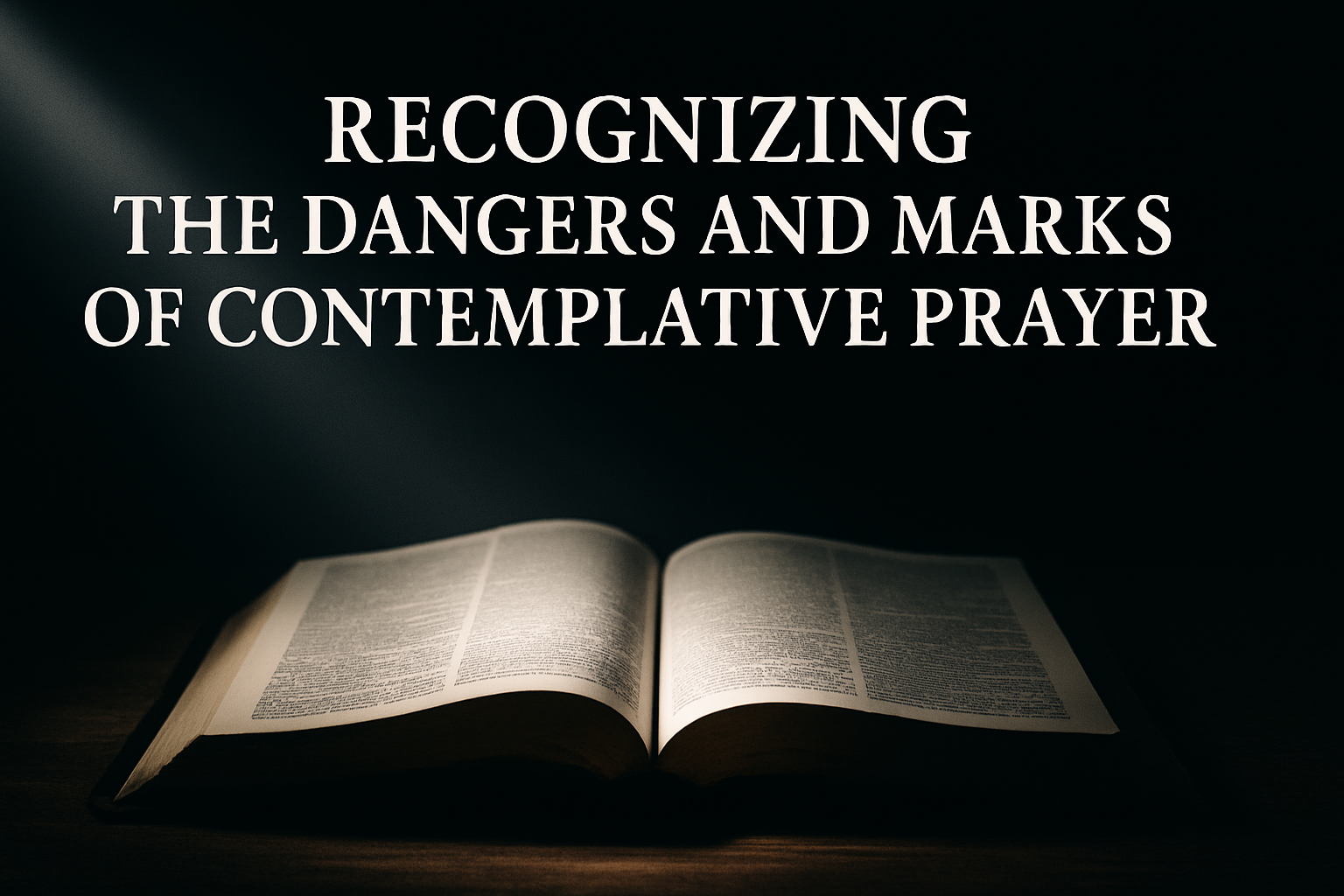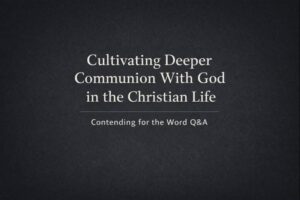⏱️ Estimated Reading Time: 3 min read
Recognizing the Dangers and Marks of Contemplative Prayer
By Dave Jenkins
Q: I’ve heard Christians talk about “contemplative prayer” or “centering prayer.” Is that biblical—or should we be concerned?
A:
Contemplative prayer is often described as a deeper, more mystical form of communion with God. Promoted as ancient and sacred, it promises intimacy beyond words, often through silence, repetition, and inner stillness.
But behind the peaceful language lies a serious problem: contemplative prayer is rooted not in Scripture, but in mystical practices that blur the line between biblical meditation and eastern mysticism.
What Is Contemplative Prayer?
Contemplative or “centering” prayer typically includes:
- Repeating a sacred word or phrase (often called a mantra) to center oneself
- Emptying the mind or moving beyond thought
- Entering into “silence” to experience the presence of God beyond words or doctrine
These practices are often promoted by figures like Thomas Merton, Richard Foster, Henri Nouwen, and Dallas Willard, and are increasingly being adopted in evangelical circles.
Why This Practice Is Dangerous
1. It Disconnects Prayer from Scripture
Biblical prayer is always rooted in God’s revealed Word—responding to what He has said. But contemplative prayer seeks an experience apart from the Word, encouraging silence over study and feeling over truth.
“Let the word of Christ dwell in you richly…” —Colossians 3:16
“If you abide in me, and my words abide in you, ask whatever you wish…” —John 15:7
2. It Borrows from Eastern Mysticism
The goal of contemplative prayer is often to detach from thought, silence the mind, and seek a formless union with the divine. This resembles Buddhist or Hindu meditation, not biblical prayer.
Scripture never commands us to empty our minds—it calls us to renew them (Romans 12:2), take every thought captive (2 Corinthians 10:5), and fill them with truth (Philippians 4:8).
3. It Redefines Intimacy with God
Contemplative prayer claims we can meet God beyond doctrine, beyond language—even beyond Christ. But true intimacy with God is never separate from truth.
“Sanctify them in the truth; your word is truth.” —John 17:17
God is not found through inner silence, but through His Son, His Spirit, and His Word.
4. It Opens the Door to Deception
Emptying the mind and passively waiting for spiritual impressions is dangerous. Without the guardrails of Scripture, people open themselves to false experiences, deception, or demonic influence (1 John 4:1).
Biblical meditation is not about detaching from reality—it’s about engaging deeply with the truth of who God is in the Word of God.
What Does the Bible Say About Prayer?
Biblical prayer:
- Is Word-centered (Psalm 119)
- Is God-focused, not self-emptying (Matthew 6:9–13)
- Invites thoughtful, heartfelt communion with the living God
- Embraces both reverence and intimacy (Hebrews 4:16)
Biblical meditation means thinking deeply on God’s Word, not retreating into formless spiritual practices.
Final Thoughts
Contemplative prayer may sound peaceful and holy, but it confuses mysticism with biblical spirituality. We don’t need altered states or mystical silence—we need truth, Scripture, and Christ.
Jesus taught His disciples to pray with words—not mantras, silence, or spiritual techniques.
As Christians, we are called to pray according to His Word, empowered by His Spirit, and confident in His promises. That’s where true communion is found.



